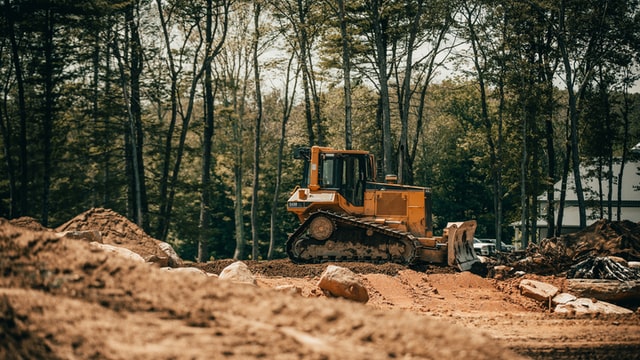
An excavator involved in a commercial project digs up fill dirt and needs to do land clearing and excavation. Commercial excavation projects are meaningful to many enterprises. They remove land to lay the foundation for a specific construction project that will take the excavated site’s place. This process of a commercial excavation is detailed oriented, precise, and requires filling dirt in huge amounts. It is important to complete the excavation project on time to make it successful. So a proper timeline should be followed. The process involves many steps, and the contractor also ensures that the land doesn’t remain more prone to excess erosion. The entire commercial construction project includes the following process.
1. Clearing Land
The beginning step in a commercial excavation project is land clearing which clears bushes, weeds, plants, and rocks. Also, you can’t take the removal of trees lightly as they are completely removed from their root system. This is because leaving the roots behind can cause serious consequences.
2. Rough Staking followed by Conducting Measurements
The second step is laying the excavation lines as well as center lines. This shows the outline of driveways, buildings, and roads. It is crucial because it requires careful measurement of depth, size, and placement. So you must not rush into this step. Last-minute changes are made on the site in this step since it’ll be hard to make small adjustments once the digging process starts. Apart from considering stylistic building placement excavator also takes careful measurements to ensure the level foundation.
3. Preparing Equipment
The excavation process requires much equipment for completing s commercial construction project. It is important to ensure that the equipment is used safely to complete all the necessary work. Commercial excavation contractors Vancouver use stores and cautiously move around the equipment to ensure lower safety hazards.
4. Transportation and storage of Fill Dirt
An important part of land grading is fill dirt, so it is important to consider how dirt has to be used and stored. Dump trucks do the transportation of loose materials like gravel, dirt, and sand.
5. Land Grading
The next step is land grading. It is the process in which the dirt is reshaped, and then a sloping base or level is made so that it can be built on the top. Land grading for the house will take one or two days, typically in an ideal climate, whereas for commercial projects, the duration is 3 or 5 days. It is important to keep the land dry to ensure proper grading. So minimum 3 days should pass without rain.
6. Excavation
The next step is excavation, where rock or soil is removed to create a trench. Soil is removed to the right depth to ensure a safe foundation.
7. Compaction Testing
Commercial excavation begins by removing ricks, trees, brush, etc. The real excavation implies moving the dirt from one location to other. Compaction tests and compaction equipment are important to ensure the dirt’s firmness to give the right support.
8. Erosion as well as Sediment Control
It is important to consider sediment and erosion control since if you neglect these two aspects, it will lead to serious problems. So the main aim is to work with the natural environment and lay a strong foundation.






